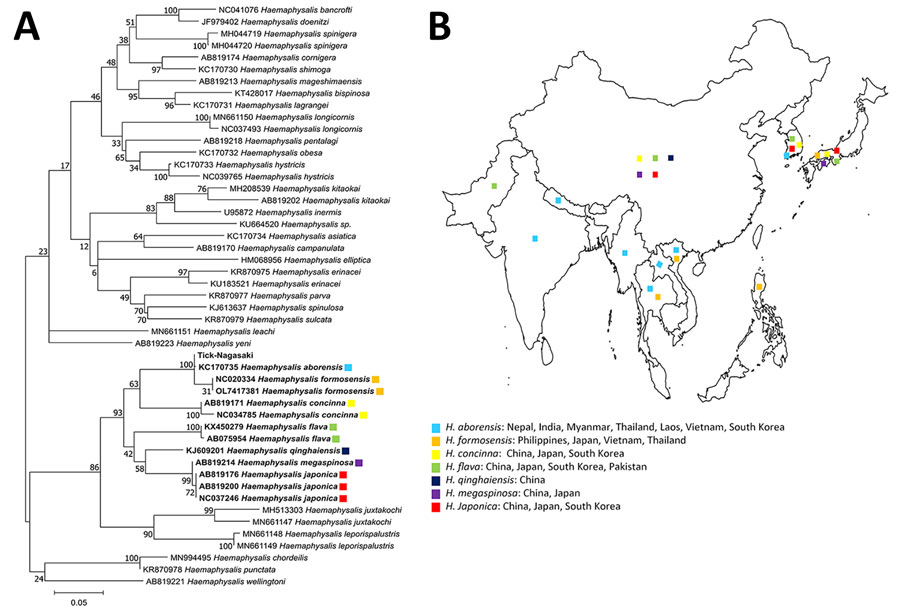Volume 30, Number 11—November 2024
Dispatch
Transmission of Severe Fever with Thrombocytopenia Syndrome Virus to Human from Nonindigenous Tick Host, Japan
Figure 3

Figure 3. Phylogenetic tree (A) and geographic distribution (B) of 36 tick species from the genus Haemaphysalis. Bold indicates tick sequences analyzed in this study; Tick-Nagasaki indicates tick collected from a human patient in Japan who had severe fever with thrombocytopenia syndrome virus. Colors indicate locations where ticks have been found. We used 49 16S rRNA sequences to construct the maximum-likelihood tree based on 1,000 replicates in MEGA 11.0.13 (https://www.megasoftware.net). Bootstrap values are indicated next to the branches. Scale bar indicates nucleotide substitutions per site.
Page created: September 24, 2024
Page updated: October 22, 2024
Page reviewed: October 22, 2024
The conclusions, findings, and opinions expressed by authors contributing to this journal do not necessarily reflect the official position of the U.S. Department of Health and Human Services, the Public Health Service, the Centers for Disease Control and Prevention, or the authors' affiliated institutions. Use of trade names is for identification only and does not imply endorsement by any of the groups named above.